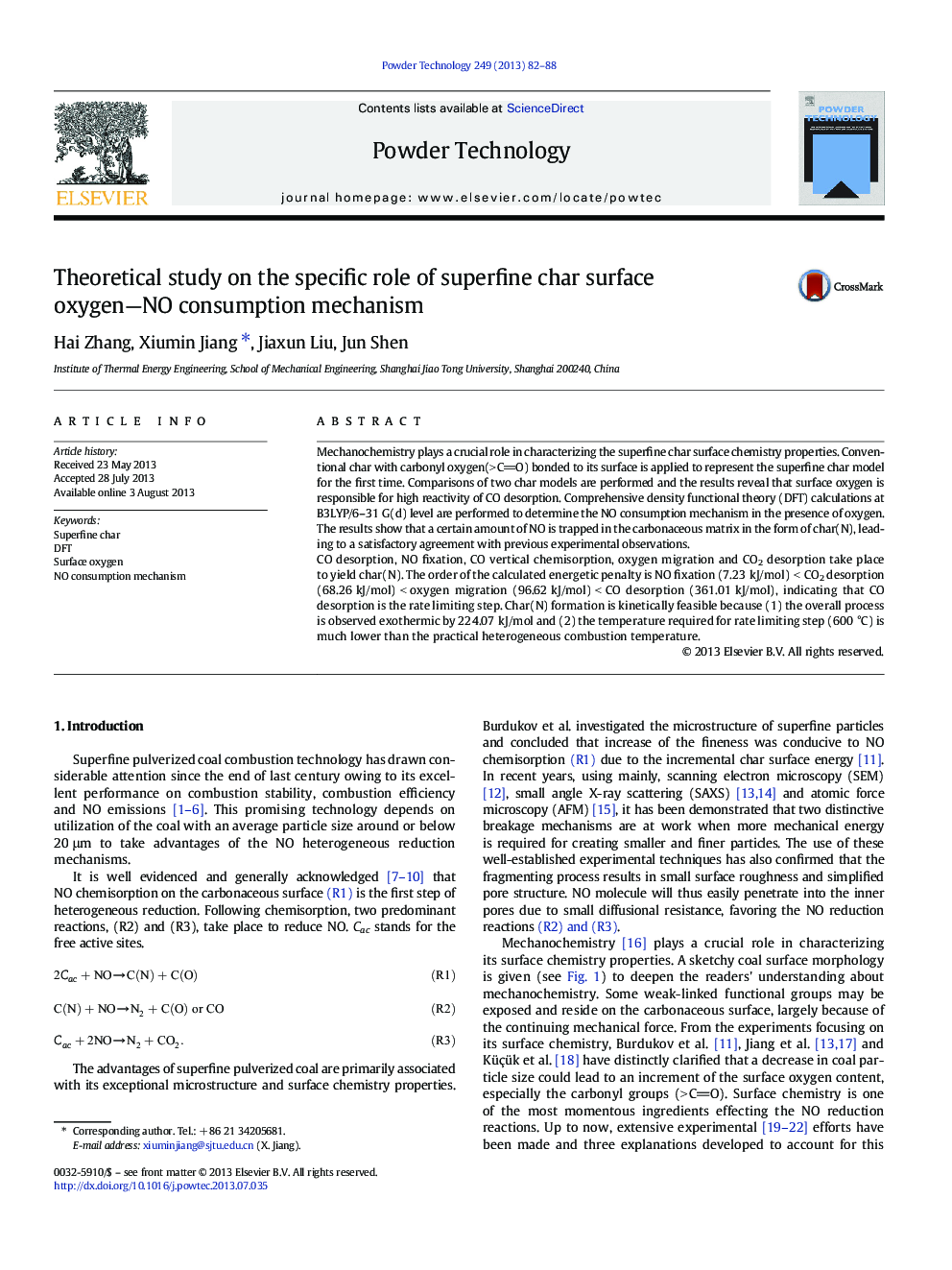| Article ID | Journal | Published Year | Pages | File Type |
|---|---|---|---|---|
| 236315 | Powder Technology | 2013 | 7 Pages |
•Mechanochemistry is of great importance in the superfine coal fragmenting process.•Common char with carbonyl oxygen bonded is modeled to represent the superfine char.•The surface oxygen is responsible for high reactivity of CO desorption.•A certain amount of NO is trapped in the carbonaceous matrix in the form of char(N).
Mechanochemistry plays a crucial role in characterizing the superfine char surface chemistry properties. Conventional char with carbonyl oxygen(> CO) bonded to its surface is applied to represent the superfine char model for the first time. Comparisons of two char models are performed and the results reveal that surface oxygen is responsible for high reactivity of CO desorption. Comprehensive density functional theory (DFT) calculations at B3LYP/6–31 G(d) level are performed to determine the NO consumption mechanism in the presence of oxygen. The results show that a certain amount of NO is trapped in the carbonaceous matrix in the form of char(N), leading to a satisfactory agreement with previous experimental observations.CO desorption, NO fixation, CO vertical chemisorption, oxygen migration and CO2 desorption take place to yield char(N). The order of the calculated energetic penalty is NO fixation (7.23 kJ/mol) < CO2 desorption (68.26 kJ/mol) < oxygen migration (96.62 kJ/mol) < CO desorption (361.01 kJ/mol), indicating that CO desorption is the rate limiting step. Char(N) formation is kinetically feasible because (1) the overall process is observed exothermic by 224.07 kJ/mol and (2) the temperature required for rate limiting step (600 °C) is much lower than the practical heterogeneous combustion temperature.
Graphical abstractMechanochemistry is of great importance in the fragmenting process of superfine pulverized coal. Carbonyl oxygen on char surface increases with the decrease of coal particle size. The role played by carbonyl oxygen is studied by density functional theory, being aimed to get insights into the favorable role of oxygen and to clarify the NO consumption mechanism.Figure optionsDownload full-size imageDownload as PowerPoint slide
